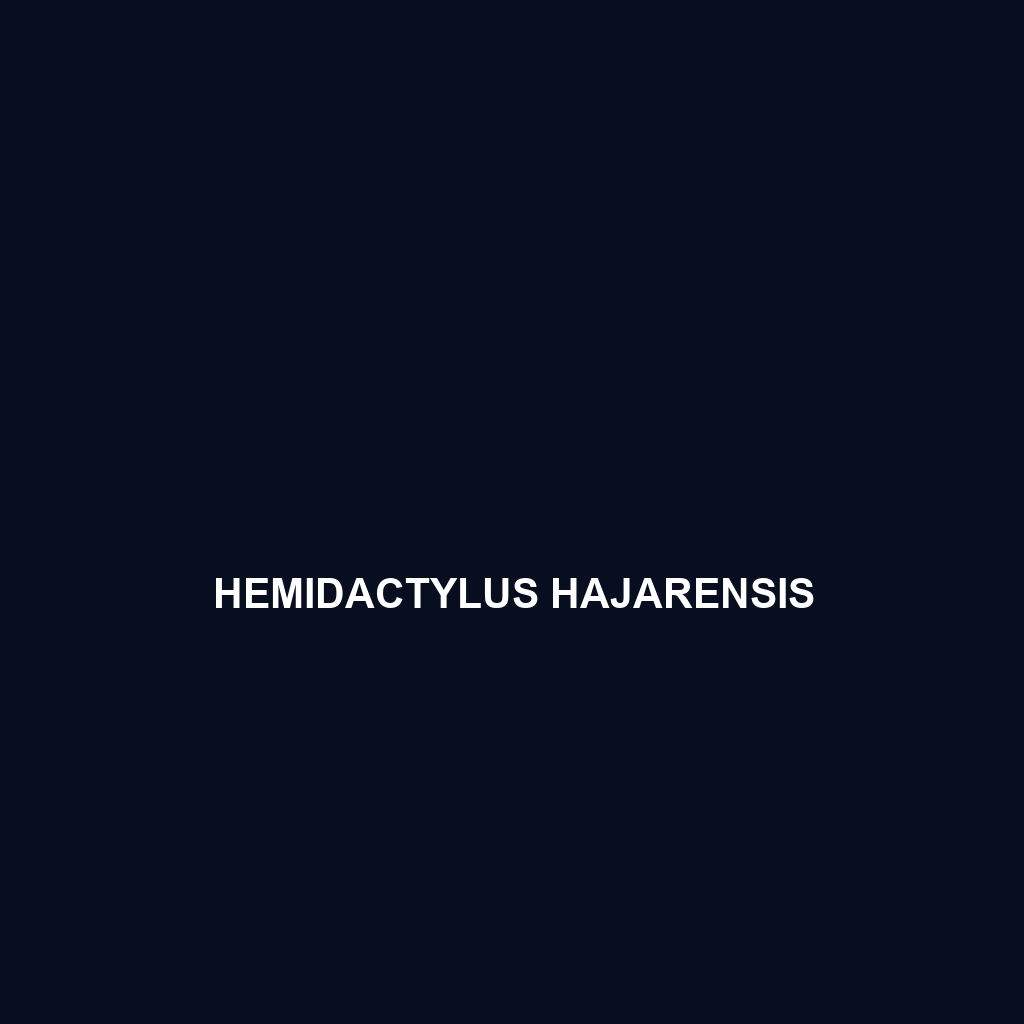Common Name
Hemidactylus gujaratensis
Scientific Name
Hemidactylus gujaratensis
Habitat
Hemidactylus gujaratensis primarily inhabits the arid and semi-arid regions of the Gujarat state in India. This species is typically found in a range of environments, including scrublands and urban areas, where rocky outcrops and crevices provide suitable shelter. The climate in these regions is predominantly dry, characterized by hot summers and mild winters. This gecko species thrives in temperature fluctuations, showcasing resilience to heat and drought conditions. The ability to adapt to both natural habitats and anthropogenic environments makes Hemidactylus gujaratensis a versatile occupant of its ecological niche.
Physical Characteristics
Hemidactylus gujaratensis possesses distinctive physical attributes that set it apart from other species within the Hemidactylus genus. Typically, adults measure between 7 to 10 cm in length, featuring a slender body with a slightly flattened head. The skin bears a range of colors, primarily light tan to grey, adorned with dark bands that camouflages them against rocky surfaces. This color variation aids in their survival, allowing them to blend seamlessly into their surroundings to evade predators. Additionally, they exhibit a unique set of toe pads equipped with adhesive lamellae, enabling them to climb effortlessly on vertical surfaces.
Behavior
Known for its nocturnal behavior, Hemidactylus gujaratensis is most active during the night, emerging to forage and mate under the cover of darkness. The species displays a range of social interactions, often found basking in groups during cooler evenings, which may also serve as a mechanism for thermoregulation. Their mating rituals are particularly intriguing, often involving complex displays where males showcase their vibrancy and agility in front of potential mates. These courtship behaviors can include bobbing movements and rhythmic tail waving, emphasizing the importance of visual signaling in their reproductive process.
Diet
Hemidactylus gujaratensis is predominantly insectivorous, primarily feeding on various insects and other small invertebrates. This species plays a crucial role in controlling insect populations within its habitat. Active foragers, they utilize their keen eyesight and swift agility to capture prey during their nocturnal outings. The diet is primarily composed of crickets, moths, and spiders, highlighting their role as natural pest controllers. Occasionally, they may consume small fruit or nectar, though they are not considered herbivores.
Reproduction
The reproductive cycle of Hemidactylus gujaratensis varies with the availability of resources in their environment. Mating typically occurs during the warmer months when food sources are plentiful. After a gestation period averaging 30 to 60 days, females lay two eggs at a time in a secure area, often hidden among rocks or in crevices to protect them from predators. Parental care is minimal, as the hatchlings are independent upon emergence. The young geckos display similar behaviors as adults and begin foraging shortly after hatching, contributing to the ongoing health of the population.
Conservation Status
Currently listed as Least Concern by the International Union for Conservation of Nature (IUCN), Hemidactylus gujaratensis has not faced significant threats due to its adaptable nature. Nevertheless, habitat destruction caused by urbanization and agricultural expansion poses potential risks to their populations. Conservation efforts focus on habitat preservation and monitoring changes in their distribution and abundance. Continued research is essential to assess the long-term impacts of environmental changes on this species.
Interesting Facts
One intriguing aspect of Hemidactylus gujaratensis is its ability to regenerate its tail after losing it due to predation or injury. This adaptation allows the species to escape threats, as a new tail grows in its place over time, although it may differ in appearance and texture. Additionally, their specialized toe pads not only allow them to scale vertical surfaces but also enable them to navigate complex environments with high agility, making them fascinating subjects for research into locomotion.
Role in Ecosystem
Hemidactylus gujaratensis occupies an important role as both predator and prey within its ecosystem. As insectivores, they help regulate insect populations, contributing to a balanced food web. Their presence indicates a diverse and healthy ecosystem. Additionally, they serve as prey for various larger predators, including birds and small mammals. Through these interactions, they play an integral role in energy transfer within food chains, further establishing their significance in maintaining ecological stability.
